Chè in Vietnamese, refers to sweet desserts which are liquid such as drinks, pudding, or even types of ‘soup.’ So chè chuối you could say is a type of pudding, made of coconut cream, tapioca pearls and bananas.
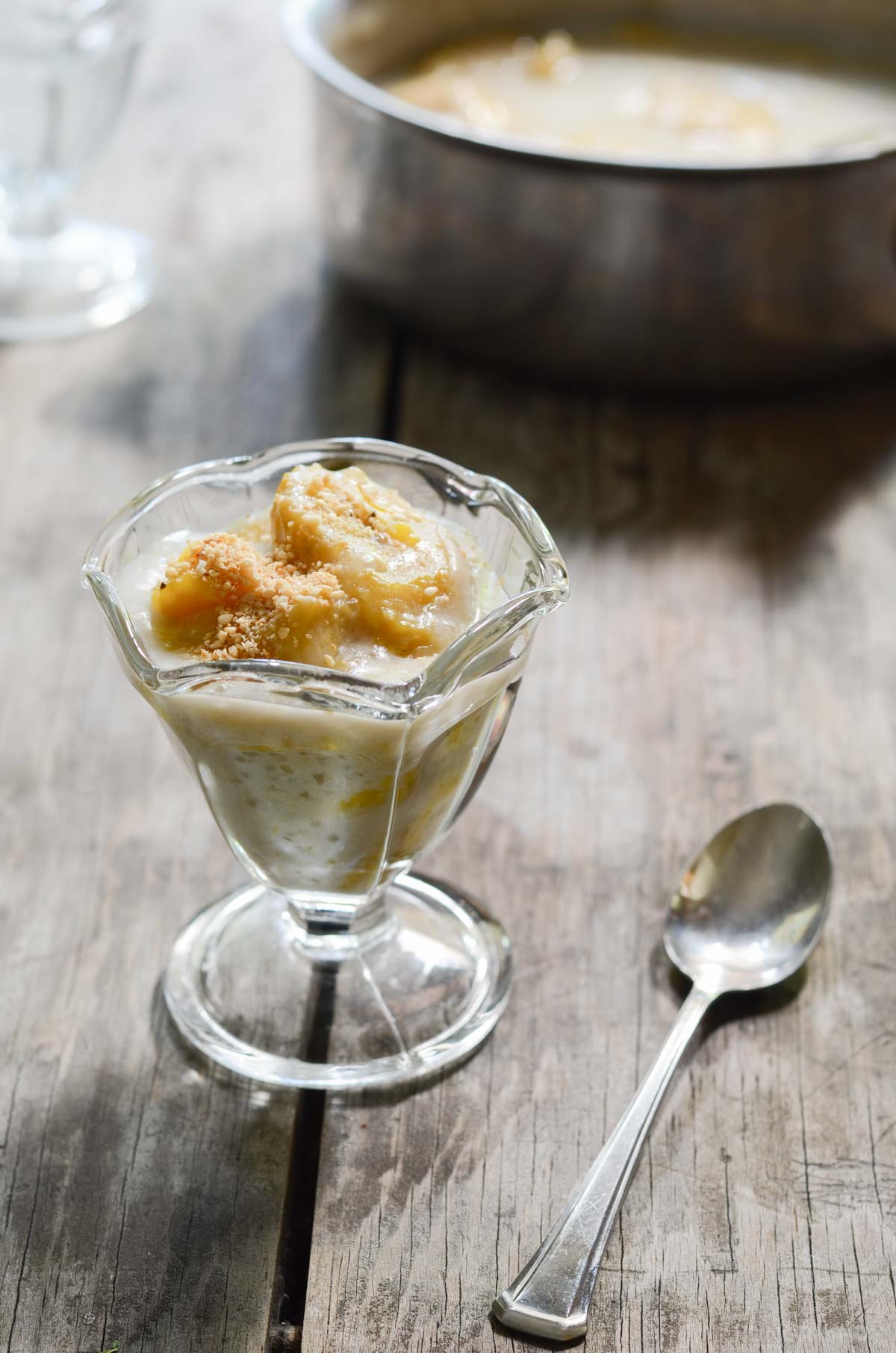
Choosing the Right Bananas
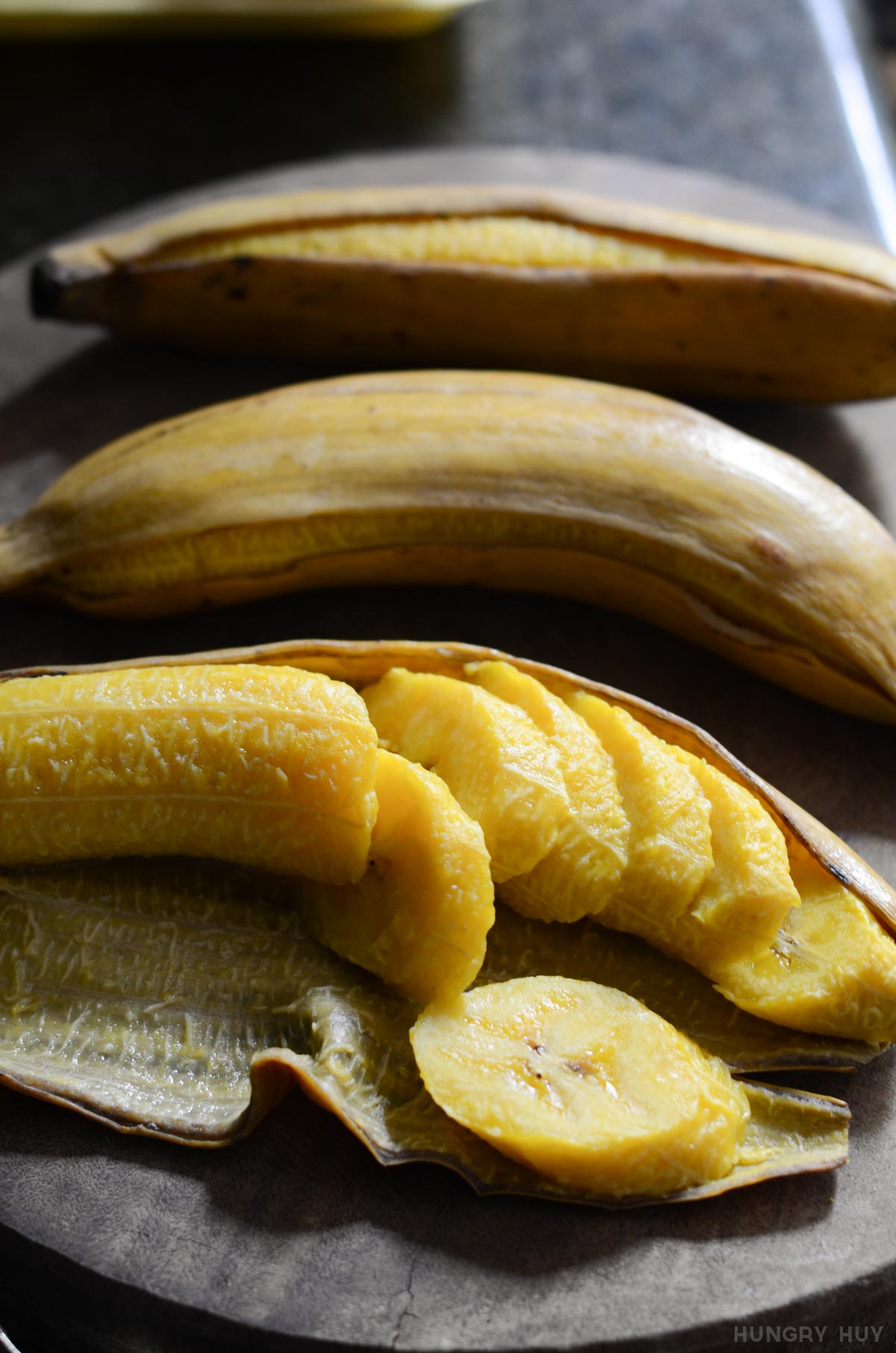
In Vietnam, cooks use a type of banana called chuối sứ which is available in some Vietnamese markets in the US if you want to make it the traditional way. In this recipe, we use plantains because the other variety was not available. It’s still an excellent choice, just as Filipino bananas are too if you can find them.
Just like when you eat plain bananas, ripeness is everything. Too green and it’s starchy and astringent, too ripe and it’s mush. Whichever bananas you choose, perfectly ripe bananas are soft to the touch, have a skin that’s yellow with hints of orange and it will be sweet. You don’t want it to be green. When the banana has blackened or browned skin, it’s a sign that it might be bruised inside which we don’t want. Peel the skin to check, and don’t get caught!
Tapioca Pearls for Thickening
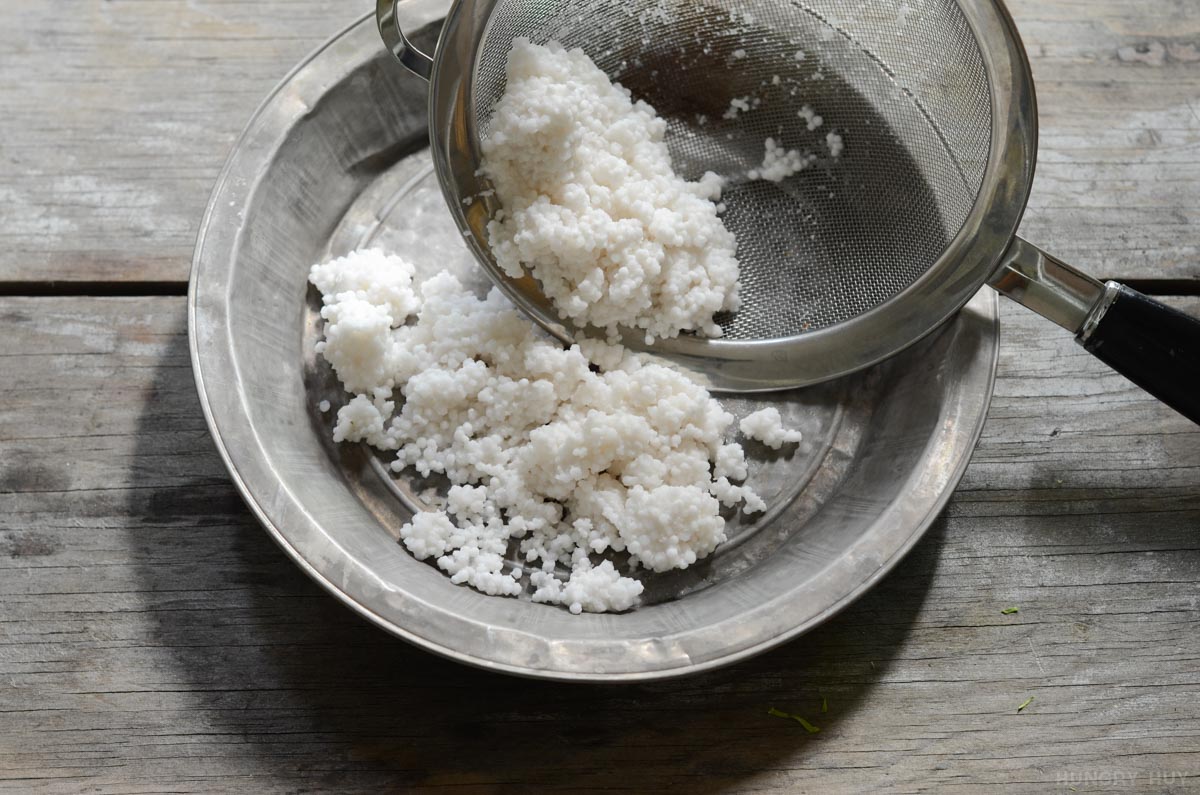
Tapioca pearls are made from cassava root starch–a root you’ll often find in other Vietnamese desserts.
These little white pearls turn clear when cooked and are used to thicken the che/pudding. The pearls need to be soaked before use so they soften–just 15-20 minutes in warm water should do the trick. Soaking the pearls before cooking will reduce the time you need to cook them later.
All brands of tapioca pearls are essentially the same, but the size you pick is affects soak time and final presentation of the dessert. Go for the smallest pearls you can find. The zig zag-cut tapioca strips look pretty cool too.
Don’t Skimp On The Coconut Cream
Coconut cream adds a lot of the flavor and fat to this che/pudding recipe. Note that coconut milk and coconut cream are not the same thing. We want cream here–a good grand is Savoy coconut cream.
In a perfect world we’d all make our own coconut cream for the freshest taste. In Vietnam and Thailand they make this cream with fresh coconuts because it’s much cheaper than buying canned varieties. Prices for fresh vs. canned are reversed in the US, and making your own cream here leaves a lot of room for error, so buying canned will save you lots of trouble.
If you have access, frozen coconut creme from Filipino (and other Asian) markets tastes even better than canned, but is triple the cost.
A Wonderful Aromatic Component: Pandan Leaves
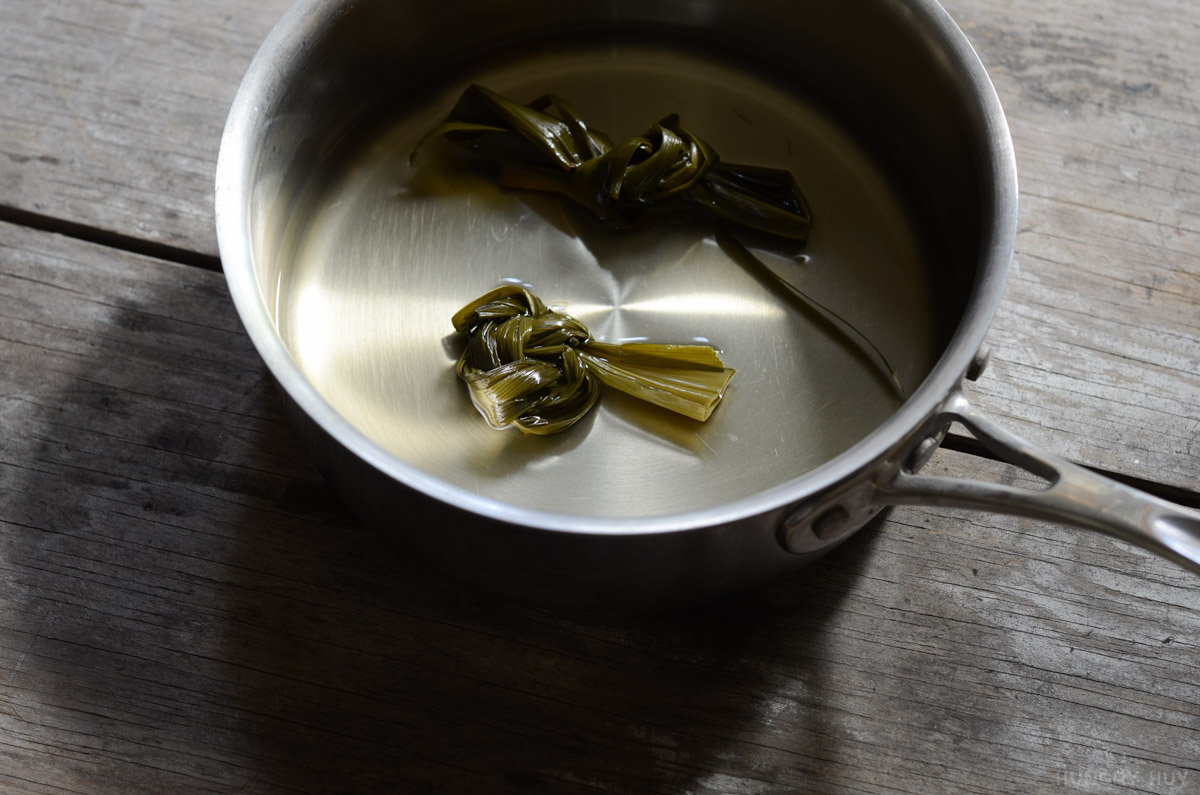
Pandan leaves are a very common ingredient in Vietnamese and other Southeast Asian foods, especially desserts. Above we have some leaves tied into knots, so it stays compact and easy to manage in the pot.
You can find pandan leaves in Vietnamese, Filipino and Thai markets in both the fresh and frozen sections. Choose the darkest leaves you can find, which signifies age and a stronger aroma. Surprisingly, the frozen variety is better than fresh since they’re grown outside the US in more ideal climates.
If you don’t live in an area where you can get fresh pandan, go for frozen. As a last resort you can use dried pandan leaves instead. Don’t resort to the artificial pandan extract, you can make this dessert without it too.
Storage and reheating
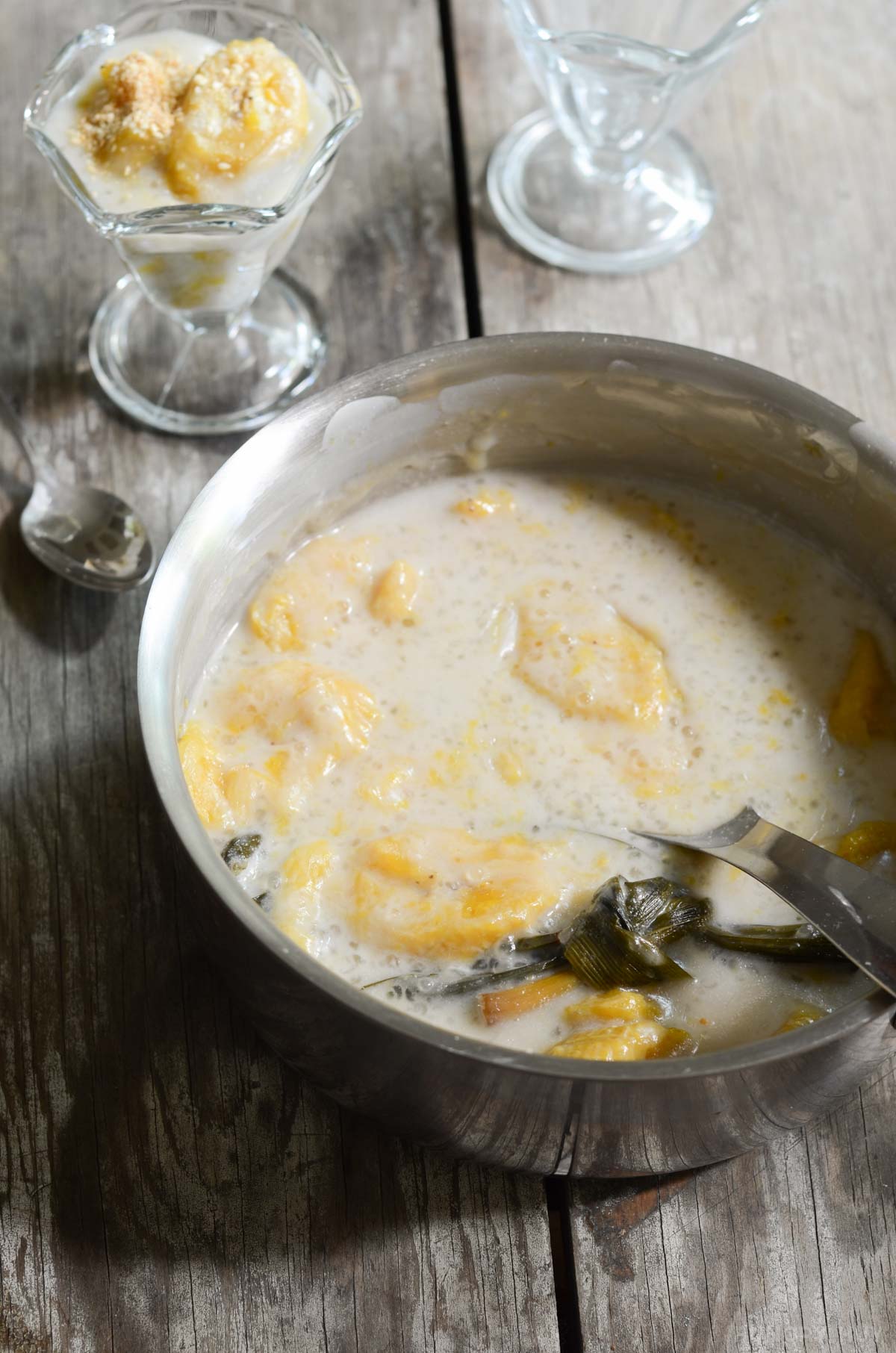
If you can’t finish a batch the same day you cook it, you can keep it in an airtight container in the fridge. Of course, it will always taste better when eaten fresh!
Coconut fat solidifies at cold temperatures, so after you fridge it this che will thicken. Just mix it up to ensure even distribution of ingredients, then scoop out a bit to reheat before eating.
Make sure you only use clean, unused utensils during cooking and even scooping out leftovers. Coconut-based desserts don’t last too long in the fridge, so this practice will make sure it stays fresh as long as possible. To tell if it has gone bad, simply use your nose. If it no longer smells good, don’t risk eating it.
What is Vietnamese Chè?
Chè in Vietnamese describes sweet desserts that come in liquid forms, like drinks, pudding, or even types of ‘soup.’ In Filipino cuisine, a similar dessert is ginataan bilo bilo, which also is a sweet soup made of coconut milk and tapioca.
How do you cook tapioca pearls?
Tapioca pearls are made by soaking pearls in water before cooking, and then boiling them in hot water or in a sweet simple syrup mixture. You can learn more about how to do this in my
recipe below.
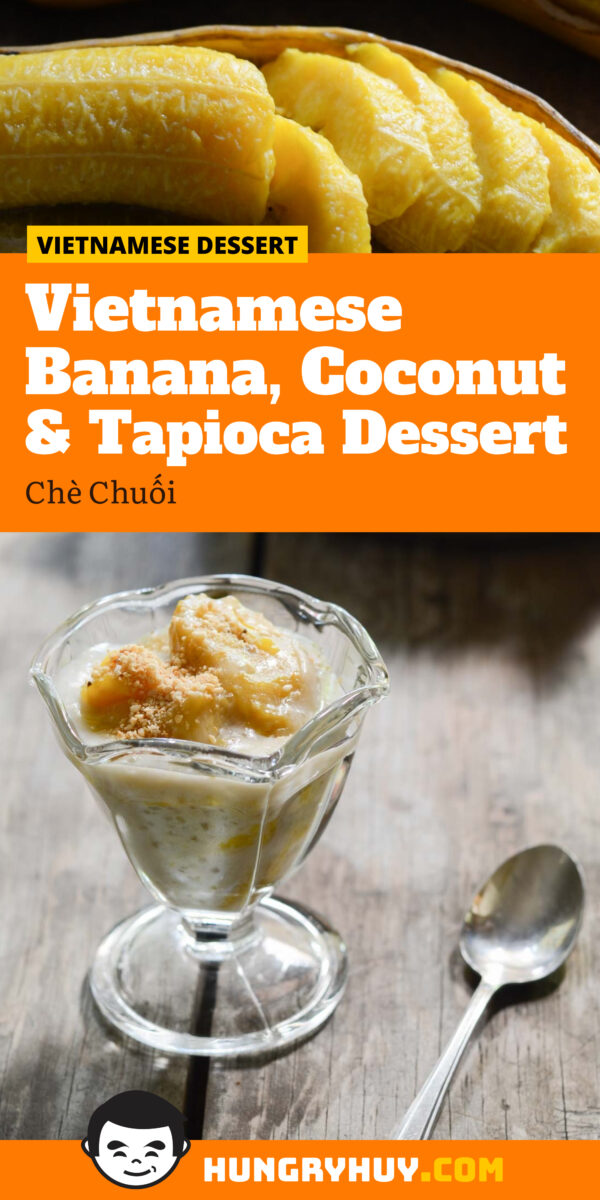
INGREDIENTS
▢ 1 lb (453.6 g) ripe Vietnamese bananas or plantains
▢ 4 oz (113.4 g) sugar
▢ 1/4 tsp salt
▢ 3 tbsp small tapioca balls
▢ 4 pandan leaves or a few drops of pandan flavoring if leaves aren’t available
▢ 1/2 can coconut cream Savoy brand
TOPPING
▢ 2 tbsp roasted peanuts lightly crushed
▢ 2 tbsp roasted sesame seeds lightly crushed
▢ 1/2 tsp salt
INSTRUCTIONS
- Soak the tapioca balls in warm water for about 20 minutes, then drain.
- Peel and cut bananas then marinate it in 4oz sugar to sweeten them. Make sure all sides of the bananas are covered in sugar, then cover and refrigerate for 30 minutes to 2 days. The longer you can marinate, the better.
- Bring 2 cups of water to a boil with 2 knots of pandan leaves. Turn the heat to medium, and simmer for about 20 minutes to extract the pandan flavor.
- Add the remaining ingredients into the pot (banana, coconut creme, tapioca, salt), simmer on medium for about 15-20 minutes more until bananas reach desired softness.
- Combine topping ingredients and sprinkle a bit on top of each individual serving
 Asian Recipes
Asian Recipes
No comments :
Speak Your Mind: